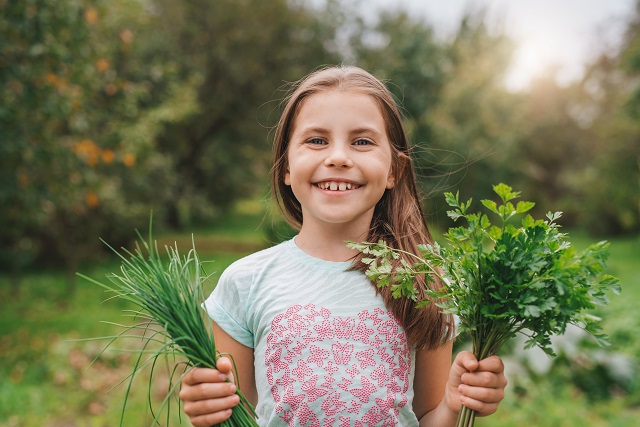
Poisonous plants can grow virtually anywhere, from remote fields and forests to parks and backyards. Spending time outdoors relaxing or having fun can lead to unexpected contact with poisonous plants, which could harm both humans and pets. This guide will help you identify these in your yard to make it a safe place for your family to play and interact with nature.
Children younger than 6 are particularly vulnerable to unintentional exposure to poisonous plants, with nearly 3 percent of pediatric poison exposures involving plants. The actual number of deaths from ingesting poisonous plants is quite low for several reasons.
First, most toxic plants cause vomiting, which removes the toxins from the body before they can cause significant harm. Secondly, poisonous plants are distasteful, so adults are not likely to eat them. Estimates indicate that fewer than five people die from consuming poisonous plants each year.
When concerns about backyard plants exist, hire a gardener or landscaper for help identifying and removing dangerous plants.
Allergenic Plants
Some plants can cause allergic contact dermatitis, which is an allergic skin reaction that occurs on contact with the plants. The rashes caused by these plants can be painful, and may also spread after initial exposure.
Poison ivy grows virulently throughout the United States, crawling along the ground and up along vertical surfaces. Poison oak, poison sumac, wood nettle, stinging nettle, and ragweed are other plants that cause allergic skin reactions.
Poisonous Plants
Thousands of plants and plant parts are poisonous, even causing death if consumed or put in the mouth. Some plants produce emetic symptoms with ingestion, including both vomiting and diarrhea. This response protects the body by eliminating the substance.
Some plants are not harmful to humans but are very poisonous for animals. It’s crucial for pet owners to know which plants are poisonous to pets. Entire plants may be poisonous, but in some cases, only specific parts of a plant are poisonous.
Deadliest Backyard Plants for Humans and Pets
For Humans |
For Dogs |
For Cats |
|
|
|
Poisonous Plant Parts
Some poisonous plants are fully toxic, with every part of the plant posing a risk for humans and/or animals. Other plants only have certain parts that are poisonous if touched or ingested.
- Fresh or dried leaves may be toxic.
- Seeds can cause a poisonous reaction.
- Fruits such as the berries of some plants may be toxic. For some plants, toxicity varies between ripe and unripe fruits. Sometimes, toxicity is stronger as the fruit ripens, and for other plants, the unripe fruits are more poisonous.
- Irritating or toxic substances may be present on or inside flowers of a plant.
- Stems may be coated with toxins.
- Plant roots may also be poisonous.
Symptoms of Plant Poisoning
Putting poisonous plants in the mouth can lead to intense irritation and burning of the mouth and tongue. Drooling is common with this irritation, and the tongue may also swell significantly. If the tongue swells, it may also block the throat, which could be life-threatening. Nausea, vomiting, and diarrhea are common symptoms of plant poisoning. This digestive upset can be severe. Some poisonous plants affect the nervous system, causing excitement, an irregular heart rate, and even convulsions, coma, or death. Mental confusion or narcotic reactions may also occur.
Preventing Poisoning
Knowing all the plants in a landscape is important for preventing poisoning. Hire a gardener to identify any unknown plants. Consider removing poisonous plants as a preventive measure. Label all plants to allow for immediate identification in the event of consumption. And supervise children and pets closely when outdoors to prevent unintended consumption of plants.
Resources
- 10 Garden Plants That Are Toxic to Pets
- Common Poisonous Plants and Plant Parts
- Poisonous Plants in the House and Garden
- Poisonous Plants
- Poisonous Plants and Safe Plants (PDF)
- List of Poisonous Plants
- Poisonous Plants in the Landscape (PDF)
- Toxic Plants
- Poisonous Plants (PDF)
- List of Toxic Plants
- Identifying Poison Ivy Isn’t Always Easy to Do
- Poisonous Berries
- Plant Safety: Prevent Plant Poisoning (PDF)
- Poisonous Plants for Cats
- Toxic and Nontoxic Plants List
- Top 10 Plants Poisonous to Pets
- 10 Plants That Are Poisonous to Cats and Dogs
- Plants That May Poison Your Pets
- Toxic Plants for Cats
- Poisonous and Nonpoisonous Plants
- 15 Deadly Plants You Might Have at Home
- The Most Dangerous Plants in the World
- 17 Plants That Could Kill You
- The 11 Most Poisonous Plants for Dogs
- 12 Most Poisonous Plants for Your Dog and Cat
 11 Home Security and Safety Tips
11 Home Security and Safety Tips  Xeriscaping: Environmentally Wise Landscaping
Xeriscaping: Environmentally Wise Landscaping  The Safe Haven of a Panic Room
The Safe Haven of a Panic Room  Making Your Stairs Safe
Making Your Stairs Safe  Mature Tree Care and Tree Removal
Mature Tree Care and Tree Removal 

Are You Familiar With This Topic? Share Your Experience.